
(RNS) — An ancient ritual as old as Hinduism itself has traveled through time and space all the way to the waters of California’s Bay Area.
Starting at sundown on Friday (Nov. 17), hundreds of Hindus will wade into the waters of Quarry Lakes, a manmade lake in Fremont, California, to express reverence to nature, which they believe to be God manifest.
The festival of Chhath, which originated in the Indian state of Bihar, is devoted to Surya, the god of the sun. Worshippers thank Surya for providing light, warmth and life by fasting for three days and offering solitary prayers and fruits.
But Chhath’s rituals, stemming from the earliest roots of Hinduism, known as Vedic Hinduism, which was prevalent in India more than 3,000 years ago, predate the Hindu gods we know today by some 1,400 years.
With a focus on meditation and gratitude, the Vedic tradition, named for the Vedas, its sacred texts, is still present in yoga’s Sun Salutation, or suryanamaskar.
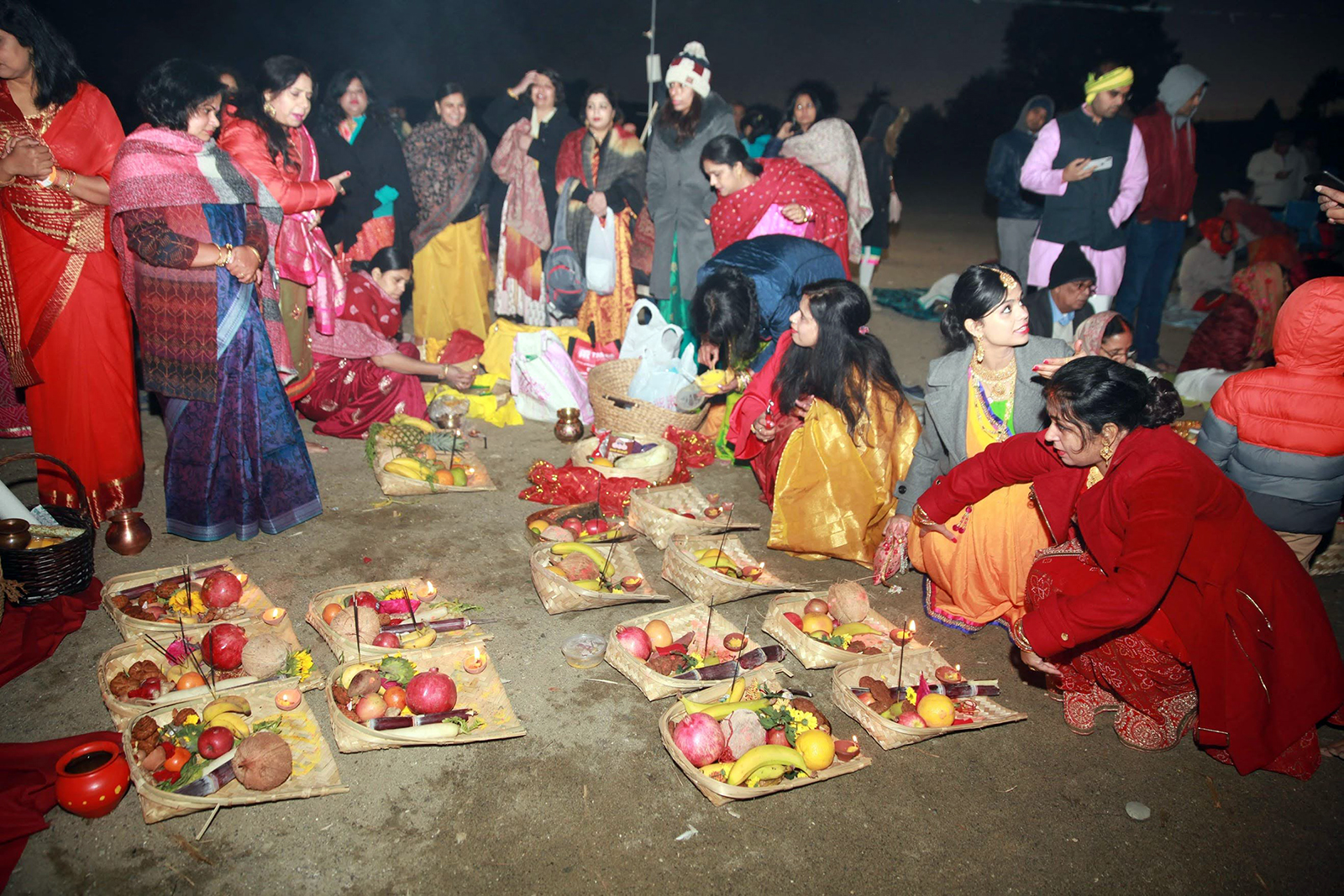
Hindus prepare Chhath puja offerings at Quarry Lakes Regional Recreation Area in Fremont, California, in Nov. 2019. (Photo courtesy Sunil and Shalini Singh)
“What I really value in Chhath is a connection to my roots and to an ancient tradition,” said Pushpita Prasad, a Bihari Californian who has participated in the festival in recent years. “It makes me feel very powerful to be a part of something that my ancestors might have been doing thousands of years ago.”
While it began with a single family’s observance in 2011, the Quarry Lakes Chhath has turned into an event that will draw 1,700 people this year — a number limited by the Quarry Lakes park authority’s cap on attendance. With more than 4,000 Hindus expressing interest, the event is sold out in minutes after word spreads that registration is open.
“People become very nostalgic about this,” said Sunil Singh, who founded the Quarry Lakes celebration with his wife, Shalini. “It is the holiest and most auspicious festival in Bihar. “My goal is to encourage the next generation, so they get engaged and they know what Chhath is.”
In India, families celebrating Chhath will travel to the holy waters of the Ganges and Yamuna rivers, considered by many Hindus to be blessed with spiritual properties from their namesake goddesses. They will break their three-day fast with a particular type of wheat that they have grown in a way that ensures it is untouched by birds. They also use a special set of utensils to break the fast.
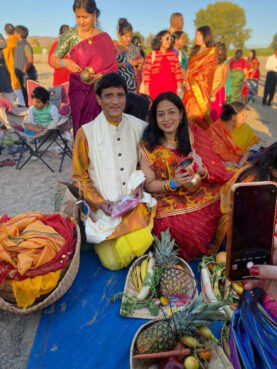
Sunil and Shalini Singh pose together during a Chhath puja celebration. (Photo courtesy Sunil and Shalini Singh)
While details like these are not always the same here in the States, to the Singhs, having the community eagerly show up to perform an ancient practice aimed at being one with nature is enough.
“The puja is not only doing the formalities,” said Shalini, using the Sanskrit word for an act of worship. “The real prayer is how you connect with God. It’s better to do whatever little modifications you can do to keep the culture, and keep your heart clean and pure.”
When the couple started the Quarry Lakes Chhath, their daughter was just 4 years old. This year she wrote about her family’s mark on the Bay Area in her college applications.
“Because it’s so big now, it’s not possible for just two people to handle it,” said Shalini. “We are very thankful for our community and our friends for engaging with us from end to end.”
When she came to the U.S. from Bihar, Shalini said, she never expected to celebrate Chhath in a bigger way than she did at home. “My prayers were heard,” she said.
For Manisha Pathak, founder of the Overseas Organization for Better Bihar, the festival creates an awareness about Bihari culture beyond its attendees. “Chhath is so relatable because it’s all about nature, and nature is for everyone,” said Pathak. “It is not just for Biharis.”
A Silicon Valley software engineer, Pathak began performing the ritual herself about 10 years ago. As the puja requires only meditation on the self, it doesn’t require a priest, a rarity in Hinduism.
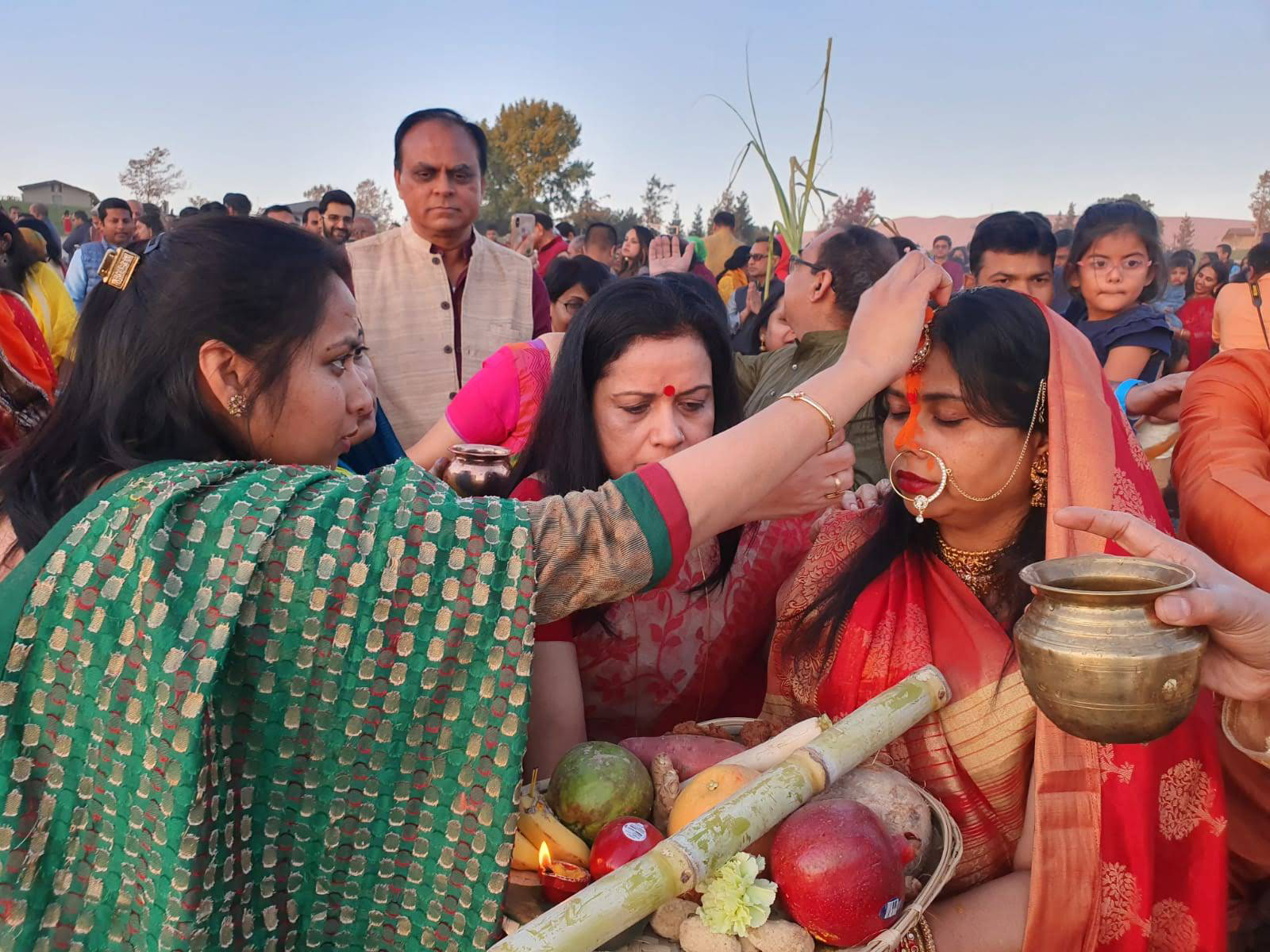
Manisha Pathak, right, prepares to offer Chhath puja prayers at Quarry Lakes Regional Recreation Area in Fremont, California, in Nov. 2019. (Photo courtesy Sunil and Shalini Singh)
As with many of the spiritual philosophies of Hinduism, Chhath is said to offer health benefits: The vitamin D from the sun radiates energy within the observer and can be passed along to anyone who is touched by the vrati, or person performing the puja.
“At the end of the puja and the sun rises, when I am gazing at the sun with water in my hands, that is a burst of energy that I absorb,” said Pathak. “It feels like I can move mountains.”
The tradition requires one member of a family to maintain a strict fast from sundown on Friday to sunrise on Sunday. At the end, everyone is fed Thekhua, a famous Bihari treat made of wheat, jaggery (made from cane sugar) and clarified butter, or ghee.
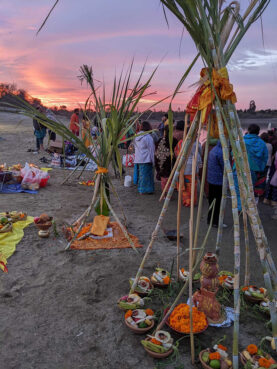
Fruit offerings are laid out during a Chhath Puja event in California. (Photo courtesy Pushpita Prasad)
“Chhath puja is an experience of union with God,” said Pathak. “What is God according to Hindu belief? It is nature, the energy, the vibration. You experience that unity when you are standing in water just with your eyes closed. There is stillness there, and it is so amazing.”
Prasad, an advocate for Hindu Americans and board member of the Coalition of Hindus of North America, said the power of this ancient tradition lies in its ability to be celebrated just as fervently in modern times. As a lesser-known festival, she added, Chhath is emblematic of the sheer diversity of beliefs that are honored from every Indian state.
“This is a beautiful ecosystem that has nourished and cherished diversity for thousands of years. It has allowed massively different beliefs to coexist,” she said.
Pathak, who is a Hindustani classical vocalist, posts covers of traditional Chhath folk songs in the Bhojpuri dialect on YouTube for audiences of hundreds of thousands. Many of the songs are dedicated to Chatthi Maya, the goddess associated with Chhath, said to be the protector of children. “As a kid, I used to go to a river and see my whole family doing the puja together,” said Pathak. “And the same feeling comes up here. When I see other people doing it at the same time, those same memories come alive.”
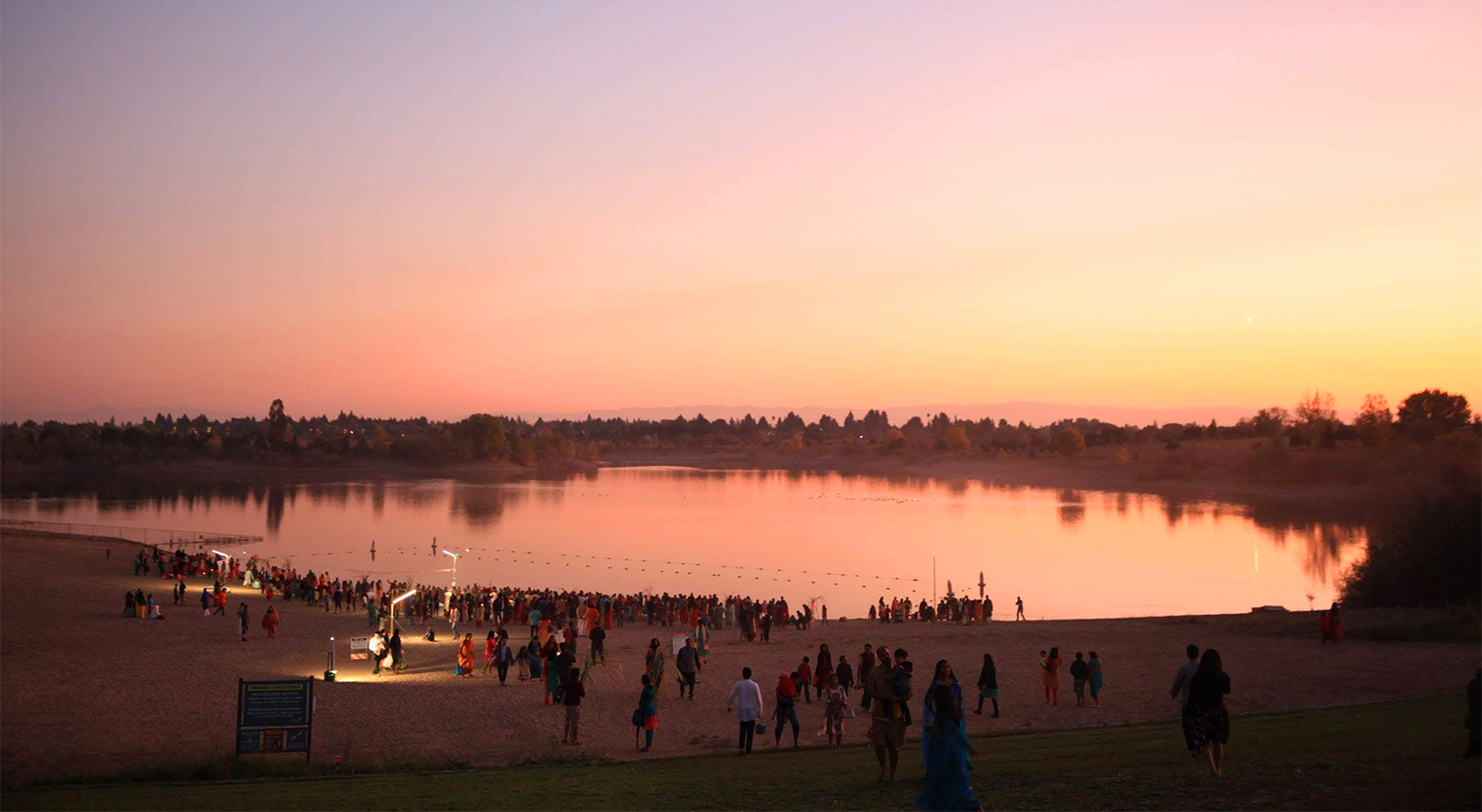
The sun sets during Chhath puja festivities at Quarry Lakes Regional Recreation Area in Fremont, California, in Nov. 2019. (Photo courtesy Sunil and Shalini Singh)
